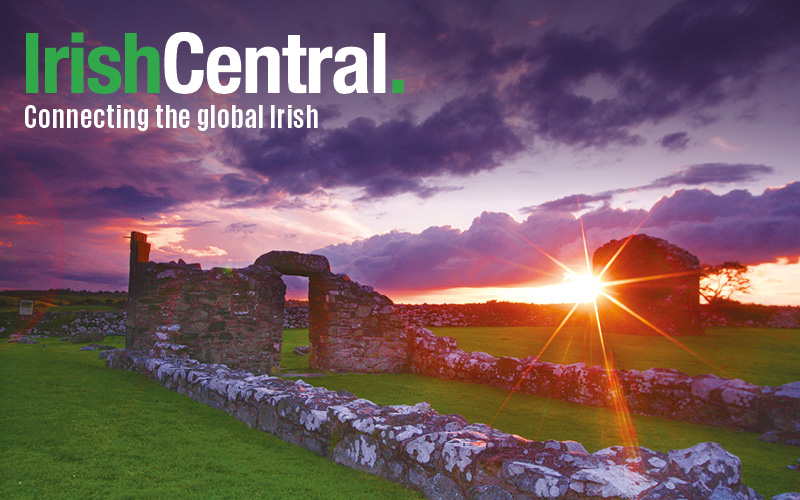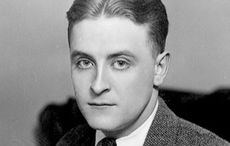| Image by Caty Bartholomew |
Matt would have been in his burly forties when I knew him. He was a quiet married man with a family who lived close to our Arney Chapel and to the little prefab St. Sinell's Parish Hall on the nearby hill. It was in this hall that the parish staged its parochial concerts of amateur plays, music, and song several times annually.
Matt was a laborer at a time when laborers really had to work hard for little enough return. He was gently popular and almost socially invisible except on the nights when the parochial concerts energized the whole parish.
For on that night Matt Snow, probably already muscle-bound and stiff from hard work, would always take to the small wooden stage for five minutes and dance a reel. Those were special minutes indeed.
You see, though the three-act plays, usually comedies of the Irish kitchen genre, provided the backbone of the entertainment, there were other acts before the plays began.
Accordionists played solos, so did fiddlers and flautists, there was usually a ceili band to set the toes tapping below the stage. There were men who did popular monologues like Dangerous Dan McGrew and Bold Paud O'Donoghue and The Woodlands of Loughglynn.
There would be tickets sold for a raffle for a prize like a bottle of whiskey or a fruit cake. And, before Matt Snow danced, little girls also danced.
They danced in the competitive mode, their arms rigidly down by their sides, their small bright faces unsmiling as they clearly focused their entire attention on getting their steps exactly right.
------------------
Read more:
Galway plans to build monument to Che Guevara slated by local millionaire
My top ten Irish bucket list especially for St. Patrick’s day - PHOTOS
------------------
But when Matt Snow exploded onto the stage it was all so different. An accordion offstage would supply the music, loud and fast and lively, and Matt would escape from all the rivets of his life for five glorious passionate minutes.
His arms were not tied to his sides. No, they were widely out-flung and the big working hands danced with the rest of him, incredibly flowingly graceful too. His heavy shoes, in perfect time to the music, created a beat that swept through the whole hall and beyond from the top of the hill.
Snow smiled widely, enjoying every second of it, dominating every inch of the stage, every spirit in the little hall. People cheered loudly and clapped their hands as he danced. When he concluded with a quick shy bow the place erupted.
Flatley never earned a more enthusiastic ovation than those awarded to Matt Snow. The applause demanded an encore. Matt never delivered an encore because, probably, he had already danced his all and was tired out.
In that era of the 1950s there were still elderly men and women who would dance in the genuine real old Celtic style at country house parties. Their arms were always garnishing the footwork below, and there was always a lot of emphatic "battering" on the flagstones.
Several times I even saw very feeble oldsters getting up to dance before their own hearths and supporting themselves on the backs of two plain kitchen chairs!
Years later, sadly, I often thought of them when I was covering the World Irish Dancing Championships.
I did that as a reporter several times in Ireland.
There is a sizeable segment of blogs on Irish Central each week from the highly competitive modern world of Irish dancing. Forgive me for not reading any of the contributions. It is truly because I was so shocked by what I observed when covering the championships themselves.
To me, with the joyous elemental dancing of Matt and his peers as mental backdrop, some of the scenes I observed, especially involving the lovely little girl dancers, were almost horrific, quite frightening, off-putting. There was little Celtic joy of any kind there, just fierce driven competitive stuff and raw ugly ambition.
From where I watched, the English-based and American-based dancing teachers were much more driven than those based in Ireland. In every corner of the competition center there were little dancers of both genders being driven through their paces before they competed.
The driving was more intense for the little boys and girls from the diaspora than for those dancing at home. Those sessions were, of course, natural and practical and useful. They were clearly appreciated by the many parents of the dancers who were never far away.
It was understandable that the teachers from the diaspora would be trying that bit harder for success for their pupils -- and they come from more competitive backgrounds anyway -- but I always felt they were pushing just that bit too hard and joylessly.
Ironically, in the competitions I covered anyway, the native dancers usually won anyway. But there was something else. The poor little girl dancers were so grotesquely costumed for their events.
You could say they were unnecessarily sexualized at too young an age. They commonly wore heavy curly wigs, for heaven's sake, and there was a lot of facial makeup over heavily ornamented and embossed costumes that not only must cost a fortune but also looked far too heavy to make competitive dancing comfortable.
Some of them were only babies still, in real terms, and to have them turned out like that seemed ridiculous.
When they smiled it was more like a rictus and, despite the powerful Riverdance influences, most of the arms were still rigidly alongside the bodies rather than dancing like Matt Snow's did. They reminded me of many of the American contestants in another international competition I often covered -- the Rose of Tralee.
These beautiful young women, year after year, were so blatantly driven to win that it often somehow seemed to work against them in some fashion I do not understand at all.
In Ireland 20 years ago it was notable that the boy dancers dropped out of competitive dancing as early as they could. Riverdance and the other Irish dance shows changed that situation dramatically, and more of them stayed active.
Now there was the genuine opportunity for a dance career and a glittering lifestyle and experience with it, and many of them benefited from it. And now, in the new format, they could let their arms dance as well!
I'm probably out of step with the times, but that is the way I feel on a day when sunlit hedges outside in the garden are dancing gaily in a February breeze.




Comments